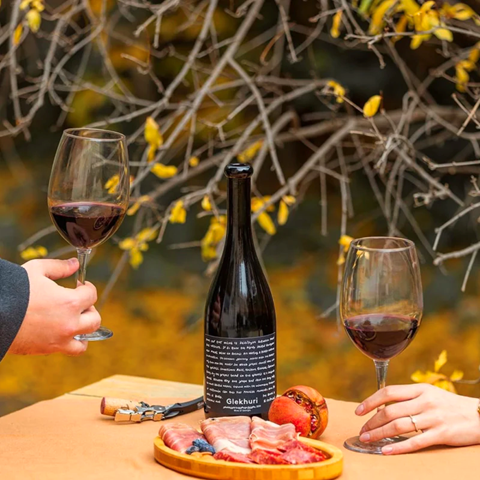
In the world of wine appreciation, the art of cellaring is often regarded as a sophisticated practice reserved for enthusiasts seeking to unlock the hidden potential within a bottle. While this timeless tradition has been closely associated with classic reds from Bordeaux or aged Burgundies, the realm of natural wines has brought a new dimension to the cellaring experience. Read to know how to unlock their full potential after you buy natural wine.
Understanding the Essence of Natural Wines
Natural wines, characterised by minimal intervention in the vineyard and cellar, often possess distinctive characteristics that set them apart from conventionally produced wines. These unique traits can influence how these wines age and evolve over time. Natural winemakers prioritise organic or biodynamic farming practices, allowing the grape's true expression to shine through without the interference of additives or excessive manipulation.
Selecting Natural Wines for Cellaring
When considering which natural wines to cellar, it's essential to understand that not all varieties are created equal in terms of aging potential. Look for wines crafted from grape varieties known for their age-worthiness, such as Cabernet Sauvignon, Syrah, Nebbiolo, or certain white varieties like Chardonnay. Additionally, wines with well-balanced acidity and tannins often fare better during the aging process.
Research the winemaker's philosophy and production methods, as these play a crucial role in determining how a natural wine will evolve. Some winemakers intentionally craft wines for immediate enjoyment, while others create cuvées designed to develop complexity and depth over several years.
The Importance of Proper Cellaring Conditions
Creating an optimal storage environment is paramount when cellaring natural wines. Unlike their conventionally produced counterparts, natural wines are more sensitive to fluctuations in temperature, humidity, and light. A natural wine shop suggests aiming for a cool, consistent temperature between 50°F and 59°F (10°C and 15°C) to prevent premature aging. Maintain humidity levels between 60% and 75% to keep corks moist and ensure a proper seal.
Storing natural wines horizontally is a key practice, as it keeps the wine in contact with the cork, preventing it from drying out and allowing for a tighter seal. Consider investing in a wine fridge or cellar with climate control features for more precise temperature and humidity management.
The Evolution of Flavours and Aromas
One of the most exciting aspects of cellaring natural wines is witnessing the evolution of flavours and aromas. Natural wines often display a more dynamic and expressive range of characteristics as they age, with initial primary fruit notes transforming into complex secondary and tertiary aromas. Earthy undertones, savory nuances, and heightened minerality are some of the delightful surprises that may emerge during this transformative process.
As you embark on your journey of cellaring natural wines, remember that each bottle has a unique story to tell. So, buy natural wine online, open that aged bottle with anticipation, savour the complexity, and relish in the timeless artistry that is the cellaring of natural wines!
